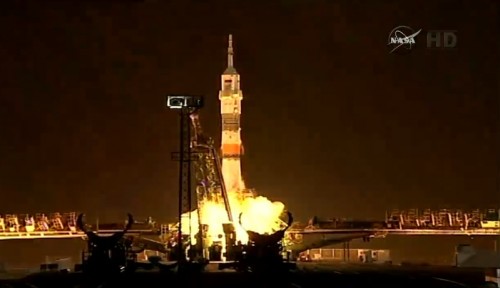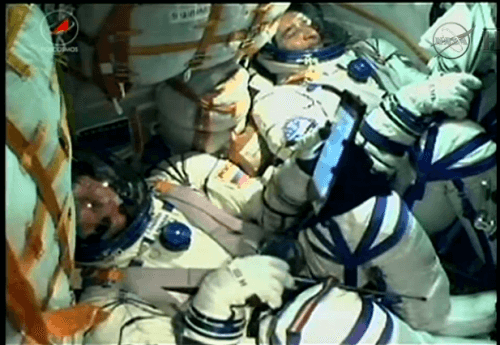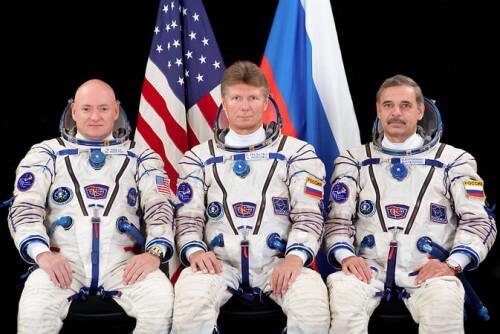American astronaut Scott Kelly and his fellow cosmonaut Mikhail Kurinenko from the Russian Federal Space Agency - Roscosmos will live and work for a year aboard the International Space Station. They themselves will be the object of experiments in preparation for flights into deep space


27/3/15 עדכון 22:45
A Soyuz model spacecraft took off on a launcher bearing the same name, this evening at 10:43. It includes the two members of the 43rd crew of the space station Scott Kelly and Mikhail Kurinenko, who for the first time in the history of the station will stay there for a whole year. According to reports on NASA's live TV broadcast, the launch went completely smoothly. The connection to the station is expected around five o'clock in the morning Israel time.
26/3/15
The first crew to spend a full year on the space station will take off tomorrow, Friday, March 27.
American astronaut Scott Kelly and his fellow cosmonaut Mikhail Kurinenko from the Russian Federal Space Agency - Roscosmos will live and work for a year aboard the International Space Station. Cosmonaut Gandhi Padalka will also take off with them. The three will become part of the 43rd crew of the International Space Station.
The three will take off into space in a Soyuz spacecraft from the Baikonur Space Center in Kazakhstan, and dock at the space station after four orbits of the Earth - about six hours.
At the station, the commander of the 43rd crew, Terry Vitris from NASA, and his colleagues Anton Shkapelrov from Russia and Samantha Cristoforti from Italy, representing the International Space Agency, are already waiting for them.
Kelly and Koronenko will spend a year on the station to better understand how the human body reacts and adapts to the harsh environment of space. The medical data of the two will be used to assess whether there are ways to reduce the risk in long missions to the asteroid and eventually to Mars as well.
Team members will assist in hundreds of experiments in biology, biotechnology, physical sciences and earth sciences. Data and samples will be collected throughout the year for a series of studies comparing Scott Kelly's physical condition to that of his identical twin brother, former astronaut Mark Kelly. With this, NASA hopes to find out what changes occur in the twin in space compared to his brother on Earth (no, this is not meant to test Einstein's theory, the space station is not fast enough for that).
Padalka will stay on the station for six months during which he will become the first commander to command the station four times and the holder of the record for the cumulative stay in space.

"As of today, humans cannot fly to Mars in less than a year, so studying the body's behavior in weightlessness for a long period of time is key to safely launching humans into deep space," say NASA.

6 תגובות
If I'm not mistaken, a Russian doctor stayed in Soliot 7 for a year and a half.
I liked
Even with another 60 years, a manned journey to Mars will happen. New players such as China and India are joining the space industry. And with the joint effort of several countries, it will happen.
Sending people to Mars has been talked about for 30 years and all the time it is "in the next 20 years" and also "more new inventions will probably be discovered that will help us".
I assume that the flight to Mars will be in a spaceship. Maybe something the size of the International Space Station. This will not be a quick task, "write it down and we're done". That is, maximum safety, slower, and more expensive. Some people will stay in place to build a research/living/supply base. And some will return immediately, when in the coming years they will replace the founders. The long way to Mars requires an even number of people (4), + an option for privacy - size.